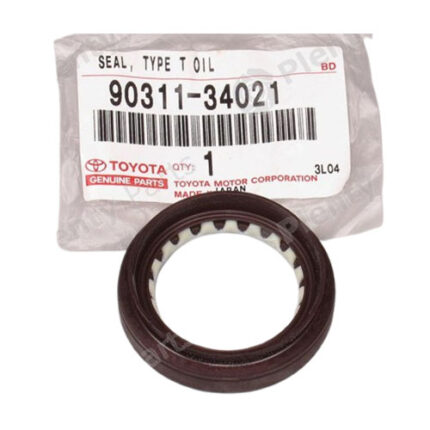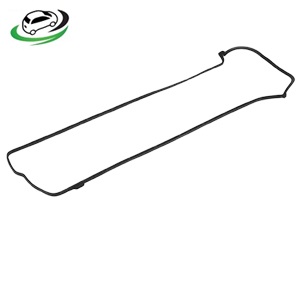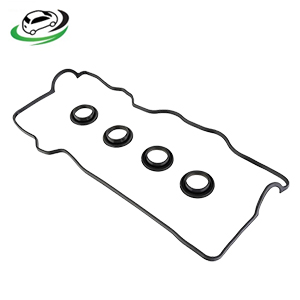-6%
Get Genuine Toyota 3S-FE, 4S-FE, 4S-FI, 5S-FE Gasket Head Cover 1121374020
The gasket for the cylinder head cover, commonly referred to as the valve cover gasket, is a vital component in an internal combustion engine. It is designed to seal the space between the cylinder head and the valve cover, preventing oil leaks and ensuring that the engine operates smoothly and efficiently. Understanding its function, the materials used, common issues, the replacement process, and maintenance can help in maintaining the engine’s performance and longevity.
Function and Importance
The primary function of the cylinder head cover gasket is to seal the valve cover to the cylinder head. This gasket serves several critical roles:
- Sealing: It prevents engine oil from leaking out of the valve cover. Oil is essential for lubricating the camshafts, valves, and other components located within the valve cover.
- Maintaining Pressure: The gasket helps maintain the correct oil pressure inside the valve cover area, ensuring that oil reaches all necessary components.
- Protecting Against Contaminants: By sealing the valve cover, the gasket keeps dirt, debris, and other contaminants out of the engine, which could otherwise cause damage to internal components.
Materials
Cylinder head cover gaskets are made from various materials, each chosen for its specific properties that suit different engine designs and requirements:
- Rubber: A commonly used material due to its flexibility and good sealing properties. Rubber gaskets can withstand a wide range of temperatures and pressures.
- Silicone: Known for its excellent heat resistance and durability. Silicone gaskets are often used in high-performance engines where higher temperatures are common.
- Cork: Provides good sealing properties and oil resistance. However, cork tends to deteriorate faster than rubber or silicone.
- Composite Materials: Some gaskets are made from a combination of materials to enhance their durability and sealing effectiveness. These may include metal reinforced with rubber or other synthetic materials.
Common Issues
Despite their durability, cylinder head cover gaskets can develop issues over time, leading to several common problems:
- Oil Leaks: The most obvious sign of a failing gasket is an oil leak. This can result in oil spots under the vehicle or oil accumulating on the engine block.
- Engine Misfire: Oil leaking into the spark plug wells can cause misfires. This happens when oil disrupts the electrical connection of the spark plugs.
- Burning Oil Smell: An oil leak from the gasket can drip onto the hot engine components, causing a burning oil smell.
- Decreased Oil Levels: Continuous leakage can lead to a significant drop in oil levels, risking insufficient lubrication of engine components and potential engine damage.
Replacement Process
Replacing a cylinder head cover gasket is a necessary maintenance task when it shows signs of wear or damage:
- Preparation: Ensure the engine is cool before starting. Disconnect the battery to prevent accidental starts and remove any components obstructing access to the valve cover, such as air intake components or ignition coils.
- Removal: Carefully unbolt the valve cover, noting the bolt sequence and torque specifications. Remove the old gasket and clean the mating surfaces on both the valve cover and the cylinder head to ensure a proper seal.
- Inspection: Inspect the valve cover for warping or damage that might prevent a proper seal. Replace the cover if necessary.
- Installation: Place the new gasket onto the valve cover, ensuring proper alignment. Some gaskets may require a thin layer of sealant at specific points, as recommended by the manufacturer.
- Reassembly: Reinstall the valve cover, tightening the bolts evenly and to the manufacturer’s torque specifications to avoid warping the cover or damaging the gasket.
- Testing: Start the engine and check for leaks. Monitor the engine for any signs of oil leakage or abnormal performance.
Maintenance
Regular maintenance and inspection of the cylinder head cover gasket can prevent issues and prolong engine life:
- Routine Checks: Periodically check for signs of oil leaks around the valve cover area and ensure oil levels are maintained.
- Timely Replacement: Replace the gasket at the first sign of wear, damage, or leaks. This can prevent more severe engine problems.
- Proper Installation: Ensure gaskets are installed correctly, following the manufacturer’s specifications for torque and sealant use.
Follow us on Facebook for more parts.



